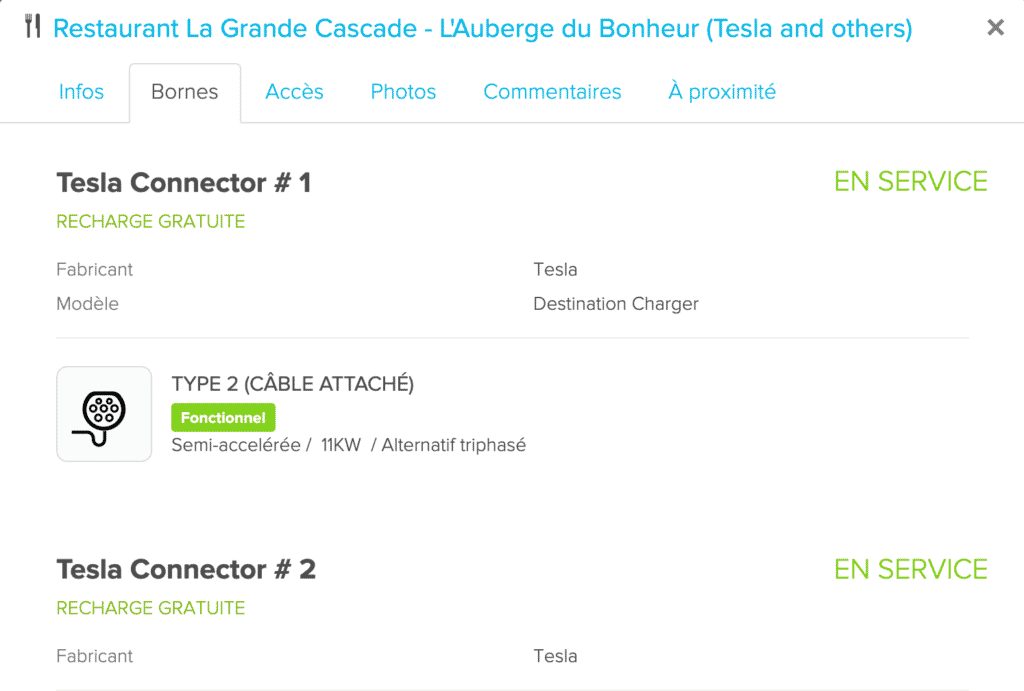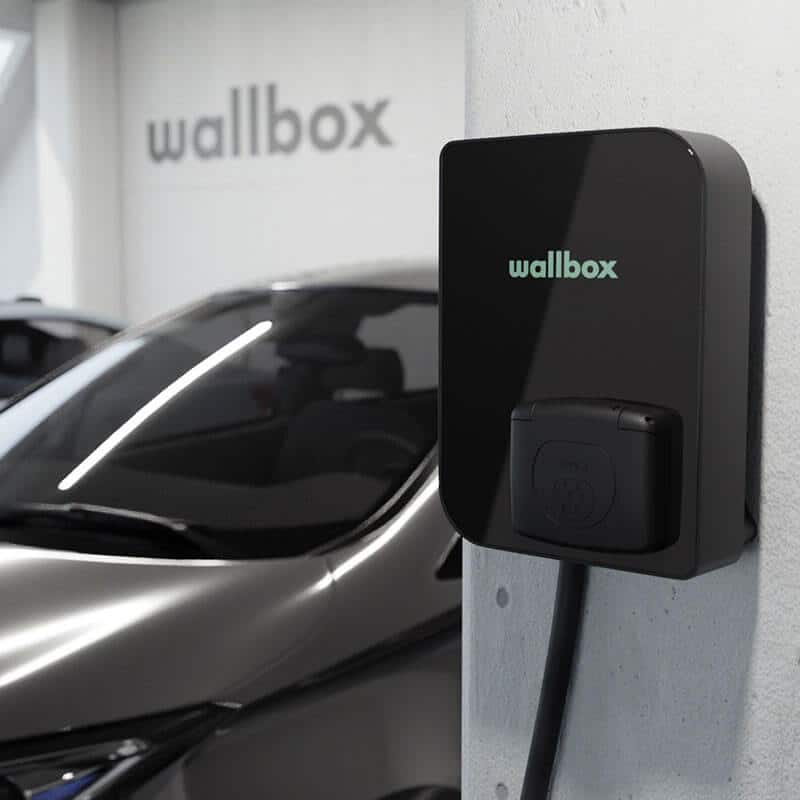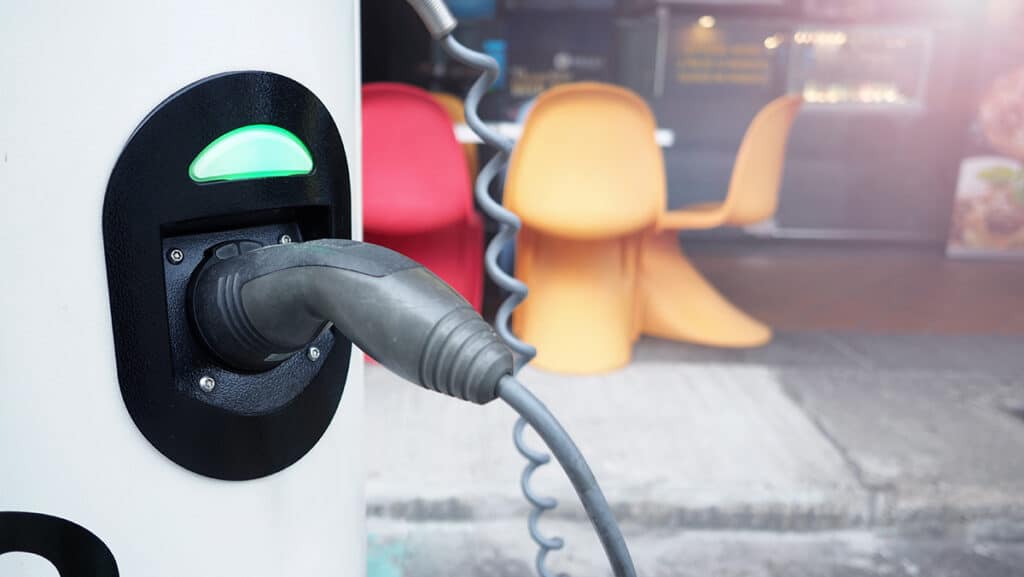Restaurant with charging station: what are the key benefits?
Charging stations are a worthwhile investment, as they are highly advantageous for the company. So don't think of them as a burden.
For restaurants, installing charging stations is an opportunity not to be overlooked. Here's why you should take the plunge!
The benefits
In-company terminals allow you to :
Keep your customers and employees coming back According to a report by Forbes published in 2017, 87% of consumers tend to have a positive image of a company that supports social or environmental initiatives. 88% are also more likely to remain loyal to these companies in the face of competing companies that care less about the environment. What's more, according to a survey conducted by the U.S. Department of Energy, employees are 20 times more likely to buy an electric vehicle if their employers offer free charging at work. Think of your customers too!
- Acquire new customers for your restaurant or employees by becoming an added value Recharging: with the advent of electric cars and the end of diesel and petrol vehicles, recharging will become essential and will have to be accessible to everyone, anywhere, just like wifi. Seeing charging stations for your restaurant will help you stand out from the lagging competition. Many customers are now looking for charging stations when choosing their restaurants!
- Electric car owners are a high-end clientele: It's also an opportunity because of the profile of electric vehicle electric vehicle drivers. They are generally very concerned about environmental issues. Having restaurants where customers can charge up hassle-free is a much-appreciated service that attracts new customers and, above all, builds long-term loyalty by offering them additional services.
- Boost your restaurant's customer traffic and be more visible via cards: By offering charging stations, you'll increase your brand's referencing. Applications such as ChargeMap or Apple Map enable electric car users to plan their itineraries, find their charging points and more. So being referenced can help you acquire new customers! On ChargeMap, you can filter your search by ticking "restaurant", which makes it easier to find the charging point in a restaurant that's right for you. (You'll have access to information such as the type of outlet, free or paid status, availability, etc.). Virtually no restaurants offer recharging in Paris, so if you've got a parking lot, go for it!


- Increase your revenue You can also charge for electricity by opting for a general strategy (service charged to all) or a stratified strategy (service charged to the public, but free to customers).
- Collect DATA: With charging stations, you'll have access to a wealth of data, including CO2 savings, energy costs, kWh usage and station activity. You can use this data for your CSR policy, communications and tax returns.
Disadvantages
One of the only drawbacks will be the annual maintenance costs, which are not compulsory but are recommended.
- 24/7 supervision with hotline support, RFID identification card, direct payment by credit card, supervision software, communication via integrated 3G card = €250 excl. tax/year/borne
- Maintenance contract with annual inspection = €250 excl. tax/year/borne
The benefits are very clear, so as you'll have understood, putting charging stations in your restaurant parking lot can be a real advantage (once again, if you have a parking lot)!
Rebilling
One of the benefits is that charging stations can increase your income! It's up to you to decide whether or not you want to pay for charging, to get a return on your investment.
As a restaurant manager, you have 2 options:
You can charge for charging sessions on a fee-for-service basis, by the hour, or per kWh of electricity consumed. There are no set rules, so it's up to you to decide what's best for your hotel guests.
- Time-based invoicing limits the number of "buffer" vehicles that remain connected when they have finished "topping up" their battery.
- kWh billing is recommended to avoid penalizing users whose vehicles recharge more slowly.
There are a number of ways to bill for recharging: you can manage recharging yourself, or automate it using a recharging point supervision system.
A kiosk supervision system provides data feedback for automatic billing of users. (Recharging history, consumption, displaying the status of free or occupied terminals, defining tariffs and managing invoicing, geolocation...)
The investment you make in charging stations means you gain customers and make financial savings. What's more, your CSR policy and compliance with future measures will be satisfied by the installation of charging stations.
It's not forbidden to offer refills to your restaurant's customers. It's up to you to decide what strategy you want to adopt. Perhaps the acquisition of new customers will make it possible to offer refills? It's up to you to do the math!
It's time to choose your terminal!
Until December 31, 2022, discover several electric vehicle models available for delivery before Christmas!
Restaurant with charging point - which one to choose?
Before installing a charging station for your restaurant, it's important to find out about the different different charging methods. Like a company that knows its fleet (and therefore its vehicle models), you'll need to choose the type of recharging that suits as many of your customers as possible!
Which charging point for a restaurant
If you can't analyze your customers' vehicles, you can analyze their behavior. When they come to the restaurant, your customers will park for less than 2 hours on average, especially if the establishment is located close to a main road. You need to offer your customers fast recharging if you want them to be satisfied with their recharges.
Macdonald's has conducted a survey showing that 48% of electric car drivers say it's difficult to find charging stations. The world leader in contract catering has announced an exclusive partnership in 2018 with Dutch company Nuon with the aim of installing charging stations for electric vehicles at its Drive-ins in the Netherlands. The agreement represents 168 charging stations in every McDonald's in the Netherlands equipped with a McDrive enabling recharging in 30 minutes. The concept will be extended to the United States, where electric cars are becoming increasingly popular.
McDonald's has set a series of ambitious targets for reducing its carbon footprint as part of its CSR policy. They plan to reduce their CO2 emissions by 36% by 2030.
In France, few restaurants are yet offering this service, despite fast-growing sales of electric vehicles. So set yourself apart by offering your customers customized recharging solutions.
In short, you have several options for recharging your customers.
- Normal accelerated charging: recovers between 30 and 150 km, depending on the power of the terminal
- Accelerated charging : recovers up to 350 km/hour
You have to find the right balance, because a terminal that only allows 30-40km/h charging won't be enough, whereas an accelerated charging station won't be of much use, as the car would occupy the parking space and therefore the charging station for around 2 hours, whereas it would be charged in no time at all. This would prevent another vehicle from also benefiting from recharging. If you charge per kW and one person occupies the space indefinitely, then your investment won't pay off!
Normal recharging to be accelerated for a restaurant with recharging point
- For your customers who park for an average of two hours, opt for mode 3 recharging, which corresponds to normal recharging with acceleration, via a wallbox. (11 kW or 22 kW are generally sufficient). This power will enable you to make the most of parking and occupying the bollard.
- With an 11 kW wallbox, a car recovers 60-70 km per hour of recharging, which is about right.
- However, if your target will be doing more kilometers, then opt for a 22 kW wallbox: 100-150km per hour of recharging. If you don't have a wall on which to mount the wallbox, you can opt for a "totem" bollard that delivers a maximum power of 22 kW.
- If your restaurant offers faster food service, you'll need to opt for mode 4 fast recharging via a recharging station.
- We recommend a 50 kW recharging station, which allows you to regain 100 km in 20 minutes of recharging.
The wallbox
The wallbox includes important intelligent functions with integrated control directly at the terminal. This requires the installation of a wallbox. The Wallbox is a wall-mounted box for recharging an electric car. It includes an electronic box that controls all aspects of recharging. With programming options available, the Wallbox has a dedicated electrical circuit, capable of delivering more than twice the power of a standard household socket. A wide range of products is available, offering options such as power adjustment, remote control, consumption data recording and consultation via an integrated display, locking and access control.

Charging station - Totem

Fast recharging corresponds to mode 4, and is carried out via a "totem", a stand-mounted terminal. It can also be used for DC charging, which produces a fast recharge. In this case, you'll need a CCS or CHAdeMO cable.
This type of charging station can be found in public places and parking lots. As the price of the charging point is high, the cost of recharging is also higher, but allows you to recharge your vehicle in a very short time. There are "Totem" type charging stations delivering 22 kW, which equals a 22 kW wallbox in terms ofrange regained per hour of charging, and is sufficient for a restaurant.
Restaurant with charging station? At what price?
The price of a wallbox charging station :
- Wallbox-type charging station - 1 charging point - RFID card access control. Power: 3.7 to 22 kW / Plug: type 2
- Expect to pay around €1,250 plus VAT (price may vary depending on installation requirements).
- Wallbox-type charging station - 2 charging points - RFID card access control. Power: 3.7 to 22 kW / Plug: type 2
- Expect to pay around €3,000 plus VAT (prices may vary depending on the installations required).
- Totem" charging station - 2 charging points - RFID card access control. Power: 3.7 to 22 kW / Plug: type 2
- Expect to pay around €4,500 plus VAT (price may vary depending on installation requirements).
- Totem" charging station - 2 charging points - RFID card access control. Power: 50 kW / Plug : CHAdeMO or CSS
- Expect to pay at least €16,000 before tax
RFID card control will enable you to collect DATA and bill your customers.
2 charge points are highly recommended. The cost of installation and maintenance will ultimately be less expensive than opting for 2 wallboxes with 1 charge point, for example.
💪🏼 Choosing the right charging station from the outset is important. The behavior of a restaurant customer is not the same as when recharging in a shop or in the city etc. A restaurant with a charging point delivering 11 kW or 22 kW will be sufficient if your customers stay on site for around 2 hours. A more powerful station (50 kW) will be needed for fast-food restaurants. Investing in recharging stations certainly has a cost, but it can be amortized more easily if your restaurant charges for recharging.
Let's take a closer look at installation and support.
Would you like to install a charging station?
How to install a recharging point in your restaurant
Installing a charging station also costs money! It's also possible to optimize it by thinking about the parking space that will be dedicated to recharging. Take the space closest to your electricity meter.
Installation of charging stations
The terminal must be installed by a professional who has IRVE(Infrastructure de recharge de véhicules électriques) certification.
Installation costs include :
- charging station price The price depends on several factors: number of terminals, charging power (11 kW, 22 kW or 50 kW), 1 or 2 sockets, etc.
- electrical installation costs The cost of electrical installations: cable supply to bollards, installation of a circuit breaker, creation of an external cabinet, installation of a cable tray on the wall, meters of cable to be laid...
- The price of "civil" installations These include: road markings, full-scale painting of parking spaces, creation of an anchoring base for bollard supports, asphalt trenches for cable routing or topsoil trenches for bollard power supply, and installation of bollard protection pins.
Remember to take a photo of your electricity meter and the cable routing from the meter to the parking spaces dedicated to recharging. It's always best to contact a service provider for a quote. They'll already have an idea of what your site looks like.
Support for the installation of charging stations
Support for for a restaurant with a charging station? ADVENIR subsidy. To benefit from the ADVENIR subsidy, you'll need to take out the Supervision, Subscription and Maintenance options. To qualify for the Advenir subsidy, you'll need to choose a certified installer, hire an IRVE-qualified electrician and comply with a set of specifications specific to each type of installation. The administrative formalities are quite onerous, but beev will take care of them for you!
To qualify for the advenir bonus, you need to install one or more recharging points in a private parking lot open to the public (customers, visitors, suppliers...).
The ADVENIR bonus covers supply and installation costs up to 60% for charging points in private parking lots open to the public. Maximum subsidies range from €2,100 (excl. VAT) to €9,000 (excl. VAT) per recharging point, depending on the theoretical maximum recharging power of the equipment installed.

Conclusion
Restaurant with charging station = restaurant with real added value.
The help available will enable you to take action and stand out from your competitors. Our experts are here to advise you and help you get started! Tell us in the comments if you'd like to install a recharging point for your restaurant.
































